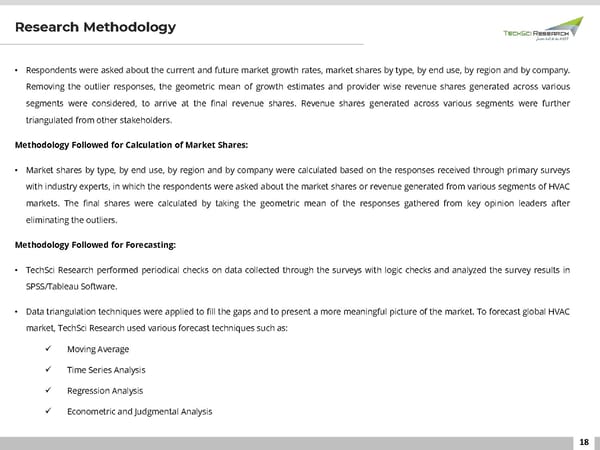Research Methodology • Respondents were asked about the current and future market growth rates, market shares by type, by end use, by region and by company. Removing the outlier responses, the geometric mean of growth estimates and provider wise revenue shares generated across various segments were considered, to arrive at the final revenue shares. Revenue shares generated across various segments were further triangulated from other stakeholders. Methodology Followed forCalculation of Market Shares: • Market shares by type, by end use, by region and by company were calculated based on the responses received through primary surveys with industry experts, in which the respondents were asked about the market shares or revenue generated from various segments of HVAC markets. The final shares were calculated by taking the geometric mean of the responses gathered from key opinion leaders after eliminating the outliers. Methodology Followed forForecasting: • TechSci Research performed periodical checks on data collected through the surveys with logic checks and analyzed the survey results in SPSS/TableauSoftware. • Data triangulation techniques were applied to fill the gaps and to present a more meaningful picture of the market. To forecast global HVAC market, TechSciResearchused variousforecasttechniques suchas: ✓ Moving Average ✓ Time Series Analysis ✓ Regression Analysis ✓ Econometric and Judgmental Analysis 18
 GLOBAL HVAC MARKET TREND 2026 Page 17 Page 19
GLOBAL HVAC MARKET TREND 2026 Page 17 Page 19